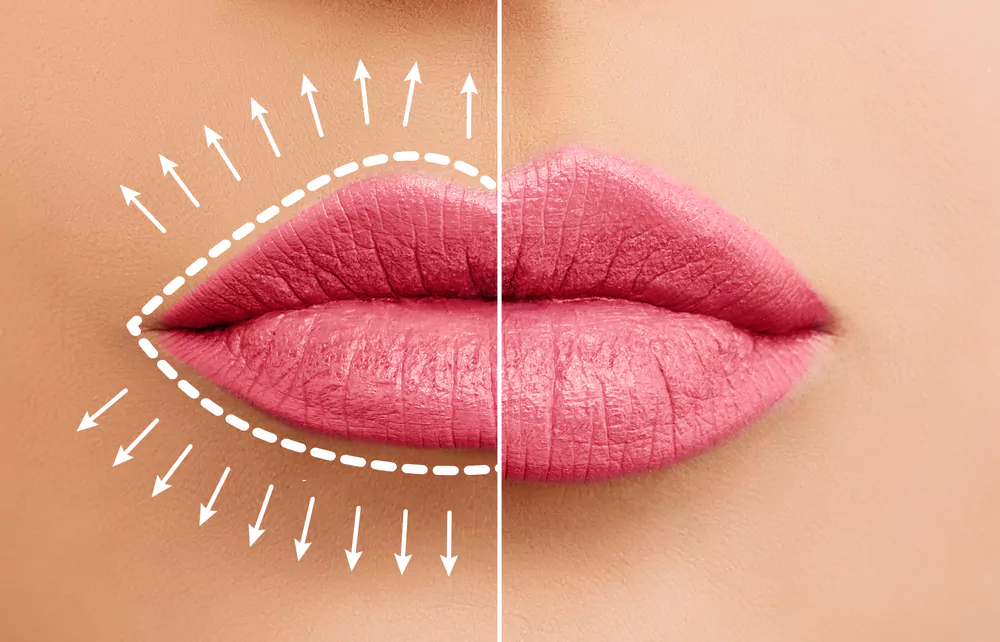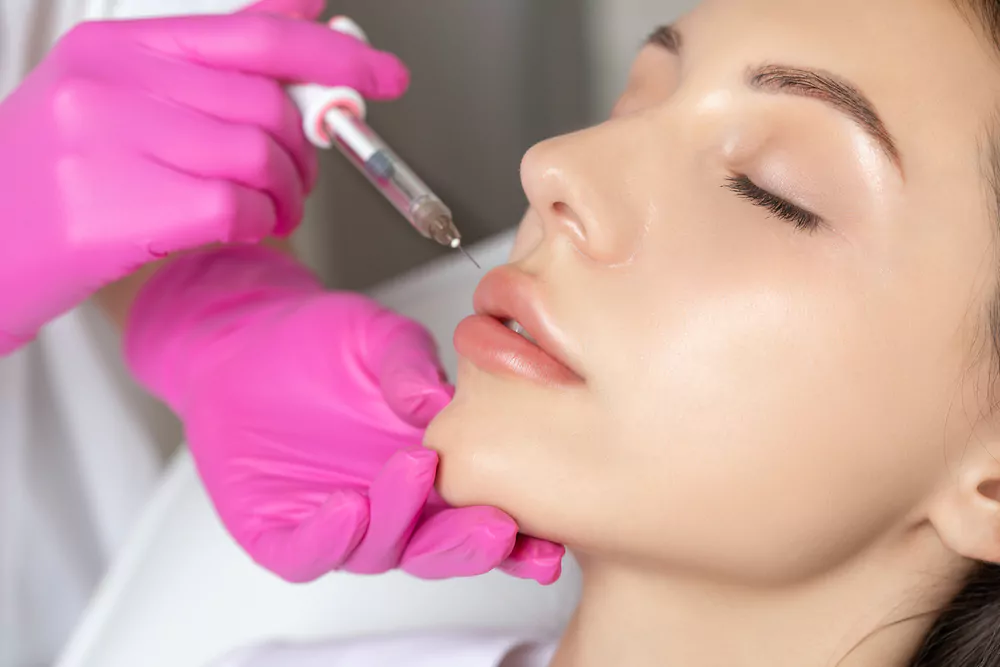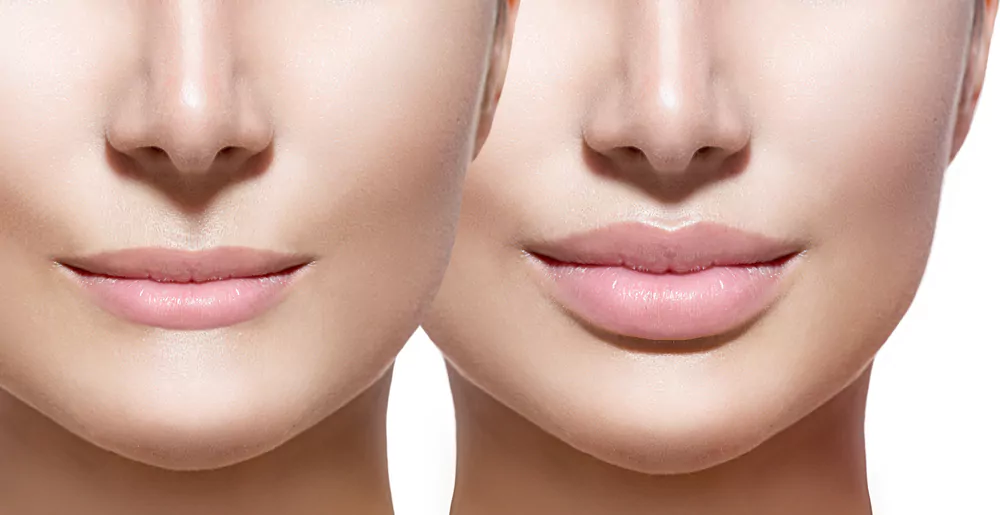The Ultimate Lip Job Guide: Achieving the Perfect Pout

In the world of cosmetic enhancements, there’s no denying the recent surge of popularity in lip augmentation. More colloquially known as a ‘lip job,’ this procedure has become a widespread trend due to its ability to redefine one’s facial appearance, helping many individuals achieve their desired aesthetic. This blog post aims to provide a comprehensive understanding of lip jobs, with a particular focus on the lip filler before and after the journey.
- What is a Lip Job?
- What are Lip Fillers?
- Lip Job Procedure
- Lip Filler Before and After: What to Expect
- The Transformation After Lip Job
- Risks and Considerations Associated with Lip Job
- How long do lip fillers last?
- How soon can I eat or drink after a lip job?
- In what ways do lip fillers benefit you?
- Wrapping Up
1 What is a Lip Job?
A lip job refers to a cosmetic procedure aimed at enhancing the fullness and shape of the lips. This enhancement is typically achieved through the use of injectable dermal fillers, with hyaluronic acid-based fillers being the most common. They offer a safe and efficient way to add volume, structure, and shape to the lips, ensuring a more youthful and balanced appearance.
2 What are Lip Fillers?

Before delving into the lip filler before and after the experience, it’s important to comprehend what lip fillers are and how they function. Lip fillers, often referred to as lip injections or dermal fillers, are non-surgical cosmetic treatment that involves injecting a substance into the lips to increase their volume or improve their shape.
The primary component in most lip fillers is hyaluronic acid (HA), a substance naturally found in the body, primarily in the skin, connective tissues, and eyes. Its key role is to retain water to keep tissues well-lubricated and moist, making it an ideal ingredient for lip fillers, as it can help provide a naturally plump look.
3 Lip Job Procedure
The lip job procedure usually takes between 15 and 60 minutes, making it a popular ‘lunchtime procedure.’ It typically begins with a consultation where you discuss your desired results with your cosmetic practitioner. They will then mark the areas on your lips that will be treated.
A numbing cream or local anaesthesia is generally applied to reduce discomfort during the procedure. Following this, the practitioner will use a fine needle to carefully inject the filler into your lips. Once the filler is in place, they may lightly massage your lips to ensure even distribution and minimise swelling.
4 Lip Filler Before and After: What to Expect
Before the lip job, it’s crucial to have a realistic expectation of the results. While lip fillers can significantly enhance the appearance of your lips, they’re not a permanent solution and usually last between 6 to 12 months. The longevity of the results depends on various factors, such as the type of filler used, the individual’s metabolism, lifestyle, and the desired volume of the lips.
Before the procedure, you should avoid certain medications like aspirin, ibuprofen, and St John’s Wort, as well as alcohol and tobacco, as these can increase the risk of bleeding and bruising. It’s also recommended to stay hydrated and maintain a healthy diet to promote healing.
After the lip job, it’s normal to experience mild swelling, redness, and tenderness around the lips, which typically subsides within a few days. The results of the lip job are visible almost immediately, but the final effect will be apparent once any swelling has gone down, usually within two weeks post-procedure.
Aftercare is an essential part of the lip filler before and after the process. You should avoid strenuous exercise, heat exposure, and alcohol for at least 24 hours after the procedure. It’s also advised to keep your lips moisturised and protected from the sun. If you have any concerns or unexpected side effects, it’s important to contact your practitioner.
5 The Transformation After Lip Job

The transformation that occurs from a lip job is usually quite noticeable, but it also depends on the individual’s original lip shape and size, the amount of filler used, and the desired outcome. Some people opt for a subtle enhancement, while others prefer a more dramatic change.
When assessing the lip filler before and after results, it’s essential to remember that everyone’s experience will be unique. For some, the change could be a subtle enhancement that brings a newfound sense of confidence, while for others, it could be a more dramatic transformation that aligns with their aesthetic goals.
A lip job can help correct asymmetry, add volume to thin lips, define the lip line, or create a more ‘plumped’ appearance. This transformation can often result in improved facial balance and harmony, contributing to overall self-esteem and happiness. It’s important to remember that the goal is not to achieve ‘perfect’ lips but rather to enhance your natural features in a way that makes you feel the most confident and comfortable.
6 Risks and Considerations Associated with Lip Job
While lip jobs are generally safe, as with any cosmetic procedure, there are some potential risks and side effects to consider. Temporary side effects like swelling, bruising, and tenderness are common, but these usually subside within a few days.
More serious complications, though rare, can include allergic reactions, lumps, asymmetry, and infection. Therefore, it’s crucial to choose a qualified and experienced practitioner to minimise these risks.
Additionally, if you’re not satisfied with the results, one advantage of hyaluronic acid-based fillers is that they are reversible. An enzyme called hyaluronidase can be used to dissolve the filler quickly, which is another reason why they are often the preferred choice for lip augmentation.
- Swelling and bruising: These are the most common side effects of lip fillers. Immediately after the procedure, you may notice swelling and mild bruising, but these typically subside within a few days.
- Redness and tenderness: Your lips might feel tender to the touch and appear red immediately after the procedure. This discomfort usually fades within a few days.
- Lumps and irregularities: Sometimes, lumps or bumps can form under the skin where the filler has been injected. In many cases, these can be massaged out by your practitioner. However, if they persist, further treatment may be required.
- Infection: While rare, there is a risk of infection with any injectable treatment. Ensuring the procedure is performed in a sterile environment by a qualified professional can minimise this risk.
- Allergic reaction: Although rare, especially with hyaluronic acid-based fillers, some people may have an allergic reaction to the filler material. Symptoms can include redness, swelling, itching, or rashes.
- Asymmetry: If the filler is not injected evenly, it can lead to asymmetrical results. This risk emphasises the importance of choosing a skilled and experienced practitioner.
- Vascular complications: This is a very rare but serious complication that can occur if the filler is accidentally injected into a blood vessel, leading to blockage. This can cause tissue loss or, in extremely rare cases, blindness. A well-trained practitioner should be aware of the anatomy of the face and be able to avoid this complication.
- Dissatisfaction with cosmetic results: As with any cosmetic procedure, there’s always the risk that you may not be satisfied with the results. Fortunately, one of the benefits of hyaluronic acid fillers is that they can be dissolved with an enzyme called hyaluronidase if you’re not happy with the outcome.
7 How long do lip fillers last?
The longevity of lip fillers can depend on several factors, including the type of filler used, the individual’s metabolism, the area treated, and how much filler is injected. However, as a general rule, you can expect most hyaluronic acid-based lip fillers to last between six months to a year.
Hyaluronic acid is a substance naturally found in the body, and over time, it’s gradually broken down and absorbed. This process happens at different rates in different people, which is why there’s a range in how long the effects of lip fillers can last.
Some people may notice that their fillers don’t last as long the first time they get them, as over time, the fillers can stimulate your body to produce more collagen, which can prolong the effects.
After this time, if you want to maintain the look achieved with lip fillers, you’ll need to get additional treatments. During your follow-up appointments, your practitioner can adjust the type and amount of filler used in order to optimise your results and meet your aesthetic goals.
8 How soon can I eat or drink after a lip job?
Avoid hot drinks for a few hours: The numbing cream or local anesthetic used during the procedure can cause temporary numbness or loss of sensation in your lips. To avoid accidental burns, you should avoid hot drinks until the sensation in your lips has fully returned.
- Be gentle: Your lips may be tender or slightly swollen after the procedure. It’s recommended to eat soft foods and take small bites to avoid causing discomfort or accidentally biting your lips.
- Avoid alcohol: You should avoid drinking alcohol for at least 24 hours before and after the procedure. Alcohol can increase the risk of swelling and bruising.
Stay Hydrated: Hydration is important after any procedure. Drink plenty of water to help your body recover and to support the process of hyaluronic acid in attracting and holding water. - Avoid using straws: Sucking motion can increase the risk of bruising and swelling and may potentially displace the filler, so it’s best to avoid using straws immediately after the procedure.
Always follow the specific aftercare instructions given by your healthcare provider, as they know your individual case best. If you have any concerns or questions, don’t hesitate to reach out to them.
9 In what ways do lip fillers benefit you?
Lip fillers, particularly those made from hyaluronic acid, come with a host of advantages that contribute to their popularity in cosmetic enhancement. Here are some of the key benefits:
- Non-surgical and minimally invasive: Lip fillers are a non-surgical cosmetic procedure, which means they involve less risk and a faster recovery time compared to surgical procedures. They’re considered minimally invasive, typically involving just a series of small injections.
- Quick procedure with immediate results: The entire process of getting lip fillers usually takes less than an hour, often termed a “lunchtime procedure.” Results can be seen immediately after the procedure, although it takes about two weeks for the swelling to completely subside and the final result to be fully apparent.
- Control over lip volume: One significant advantage of lip fillers is that they allow control over the amount of volume added to the lips. The practitioner can control the amount of filler injected, allowing for a gradual increase in lip volume, which can be adjusted to achieve the desired results.
- Gradual progression: For those who are nervous about dramatically changing their appearance, lip fillers offer the opportunity for a gradual progression. This means smaller amounts can be injected over a series of appointments until the desired level of fullness is achieved.
- Temporary and reversible: Lip fillers are not a permanent treatment. The body naturally breaks down hyaluronic acid over time, so the effects of the filler will gradually decrease over several months. Additionally, if the results are not to your liking, an enzyme called hyaluronidase can be injected to dissolve the filler quickly, making the procedure essentially reversible.
- Low risk of an allergic reaction: Because hyaluronic acid is a substance naturally found in the body, the risk of an allergic reaction is significantly lower than with other types of fillers.
- Can help improve self-confidence: For many individuals, having fuller lips can boost self-esteem and confidence. This psychological benefit can positively impact many aspects of a person’s life.
10 Wrapping Up
In conclusion, a lip job, when performed by a qualified professional, can be a safe and effective way to achieve your desired look. Whether you’re seeking a subtle enhancement or a more dramatic transformation, understanding the lip filler before and after the process can help you make an informed decision about whether this popular cosmetic procedure is right for you.
Community Q&A
About This Article
This article has been viewed 521 times.



